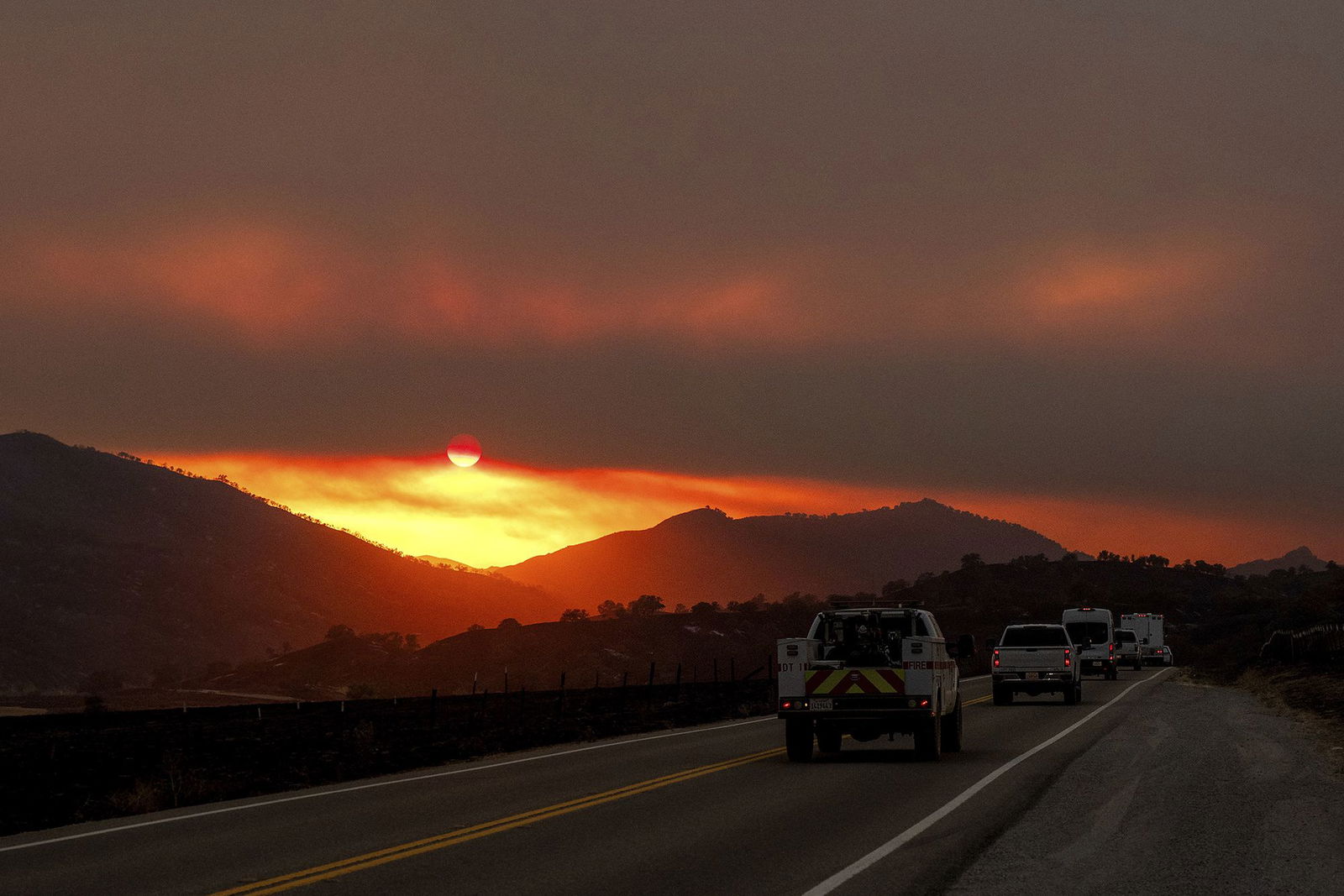One-two punch of wildfire smoke is wrecking air quality in the US

By CNN Meteorologist Mary Gilbert, CNN
(CNN) — Air quality has taken a serious hit across the United States as a twofold blow of wildfires in the West and in Canada have sent smoke pouring across large sections of the country — a problem that’s set to linger for days.
Air quality alerts are in effect Tuesday for millions of people in 11 states in the Midwest and Northeast due to smoke from Canadian wildfires. Tuesday’s smoke concentration hasn’t been quite as intense as it was Monday in these areas but remains a significant health concern, especially for people with breathing issues, children and the elderly.
Smoke from intense wildfires in the western US has also decreased air quality in multiple states, especially in Southern California, where crews are battling the state’s biggest fire of the year.
The weather that fuels wildfires – dry air and strong winds – is coming together more frequently in parts of Canada and the US as the world continues to warm due to fossil fuel pollution. And, the most extreme wildfires in North America are getting more intense, leaving the door wide open for wildfire smoke to impact more people.
There are more than 500 out-of-control wildfires in Canada as of Tuesday, according to the Canadian Interagency Forest Fire Centre. Of those uncontrolled blazes, 140 are burning in the province of Manitoba and there are more than 70 in Saskatchewan.
Smoke from those fires and ones in nearby provinces spilled south across the border over the weekend behind a potent cold front that erased intense July heat in the eastern two-thirds of the US. Shortly after, an area of high pressure developed and parked over portions of eastern Canada and the northeastern US and trapped that smoke from the Plains to the Northeast.
Air quality was abysmal to start the week in parts of the Midwest and Northeast as a result.
Detroit had the third-worst air quality out of any global major city on Monday, spending most of the day with unhealthy or Level 4 of 6 air quality. Tuesday evening, Chicago had the fifth-worst air quality out of any global major city, according to IQAir, a company that tracks global air quality.
Wildfire smoke contains very dangerous, tiny pollutants called PM2.5 that can travel deep into the lungs or enter the bloodstream when inhaled. The minuscule particles can lead to breathing problems like bronchitis and cause inflammation that aggravates diabetes, heart disease and other health conditions.
Smoke near the surface in these regions will start to clear out on Wednesday, but smoke higher in the atmosphere could linger for much of the week before a new cold front helps clear it out over the weekend.
High-level smoke has less of an impact on air quality but keeps the sky hazy, sometimes turning the sun into a brilliant orange and enhancing sunrises and sunsets.
US fires send smoke across the West
Wildfire smoke is also causing air quality issues in the West, but this smoke is homegrown.
Intense, large wildfires are burning parts of 10 Western states, according to the National Interagency Fire Center, and some are sending smoke hundreds of miles away.
California’s Gifford Fire became the state’s largest wildfire of the year on Tuesday, surpassing the acreage burned by July’s Madre Fire. It’s burned through nearly 84,000 acres of Santa Barbara and San Luis Obispo counties since igniting Friday and was only 9% contained as of Tuesday evening.
Evacuation orders were in effect Tuesday for portions of both counties as warm, dry air and gusty winds continue to fuel fire growth, with little help expected from the weather for fire crews this week. The fire’s behavior has been extreme: It burned through an area about the size of a football field every 2 seconds on average Sunday night into Monday morning.
Smoke from the Gifford Fire poured south and east into other parts of Southern California and cratered air quality in parts of Nevada – including Las Vegas – on Monday.
In fact, air quality in the Las Vegas area on Monday was the worst it’s been since February 2023, according to data from the Environmental Protection Agency. The air quality index maxed out on the upper end of the unhealthy – Level 4 of 6 – category early Monday afternoon.
Arizona’s Dragon Bravo Fire is also spewing smoke well east as it rages along the North Rim of the Grand Canyon. The megafire has grown to one of Arizona’s largest in history since a lightning strike set it off on the Fourth of July. It’s burned through dozens of structures, including a historic lodge, and become so intense that it’s created its own weather at times.
Another wildfire that’s created its own weather in recent days and threatened nearby communities is Utah’s Monroe Canyon Fire. It’s the state’s largest wildfire of the year, having burned through more than 63,000 acres since it started in mid-July. The fire was only 15% contained as of Tuesday evening.
Smoke from the Monroe Canyon Fire and the Dragon Bravo Fire has commingled at times and spread into portions of Colorado, Wyoming and New Mexico.
Wildfire season in the US is far from over, and smoke issues will persist as long as fires blaze. The West will remain the major wildfire hot spot through at least September, forecasts from the National Interagency Fire Center show.
The-CNN-Wire
™ & © 2025 Cable News Network, Inc., a Warner Bros. Discovery Company. All rights reserved.
CNN Meteorologist Briana Waxman and CNN’s Joe Sutton contributed to this report.



